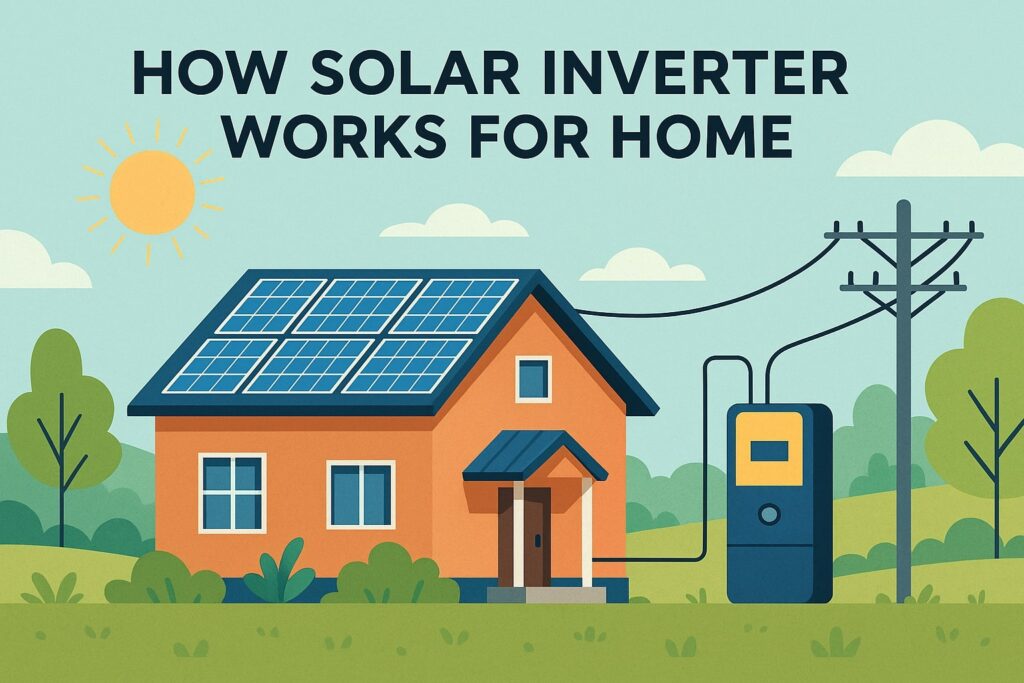Are you guys planning for going solar but not sure where to start. Well start with the most important part of the solar panel system – The Solar Inverter! Solar panels get most of the attention, but it’s the solar inverter that actually makes your solar energy usable. For simple understanding, consider solar inverter as the heart of your solar panel system. In this guide we will walk you through how solar inverter works for home using simple explanations, real-life examples, diagrams and FAQs. Plus we’ll also talk about cost, brands, battery options, maintenance, and more common things.
What is a Solar Inverter and Why Do You Need One?
A solar inverter is that device which converts the DC (Direct Current) electricity generated by your solar panels into AC (Alternating Current) electricity — which is what your home appliances run on.
Without a solar inverter the electricity your panels generate would be very much useless at home. It is kind of like translating one language into another your house or your appliances understands.
One way to understand it is: your solar panels are speaking in DC, but your washing machine or your refrigerator only understands AC. The inverter is the translator! and without translation i.e. conversion your appliances would not understand the language.
Pro Tip: Modern inverters also track your energy production, detect faults, and even allow remote monitoring via apps. So it does more than just convert electricity.
How Solar Inverter Works Diagram
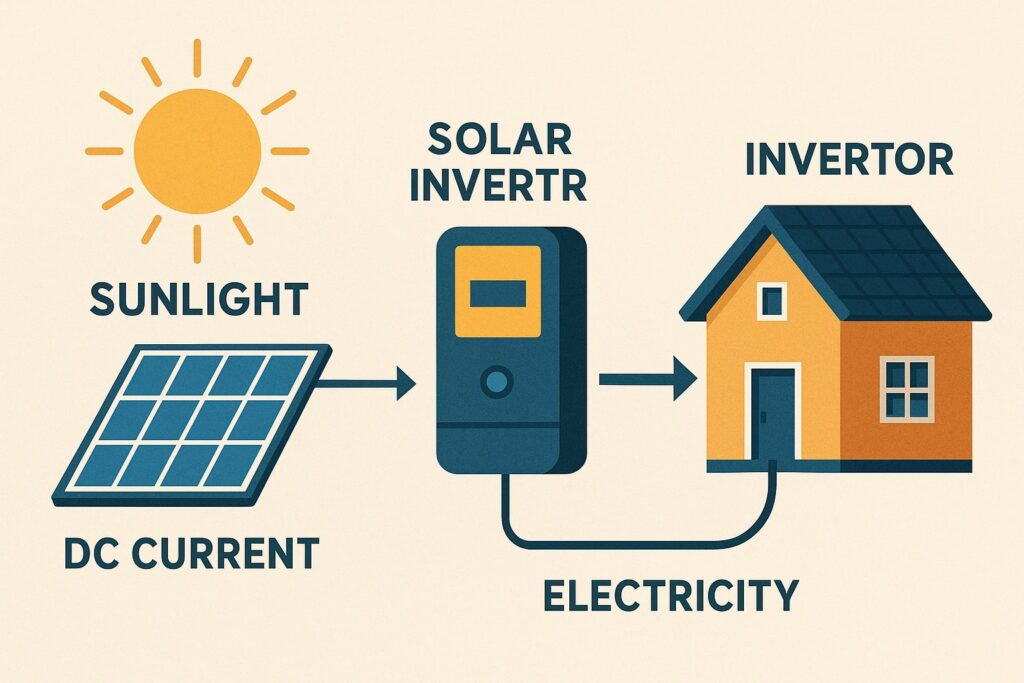

Let’s make it super simple:
- Sunlight hits the solar panels → electricity is generated in DC.
- DC flows to the inverter.
- Inverter converts DC to AC.
- AC is used by your home or sent to the grid.
Types of Solar Inverters for Home Use


String Inverter
Most common and affordable inverter type for solar energy use. All panels connect to a single inverter.
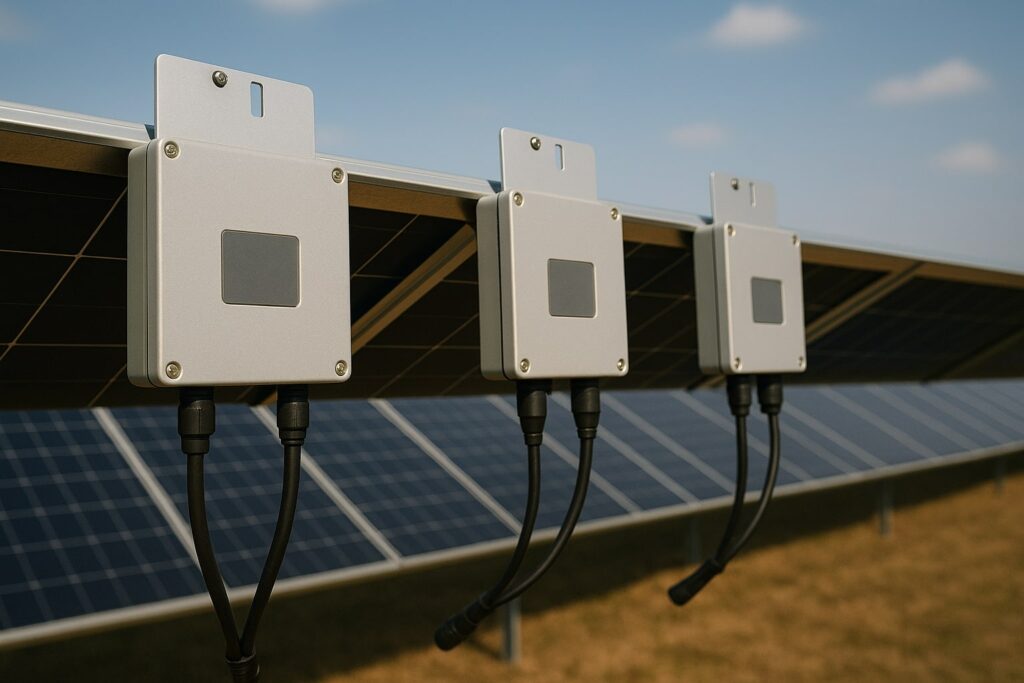

Microinverters
Each panel gets its own inverter. More efficient but also more expensive and more maintenance needed.
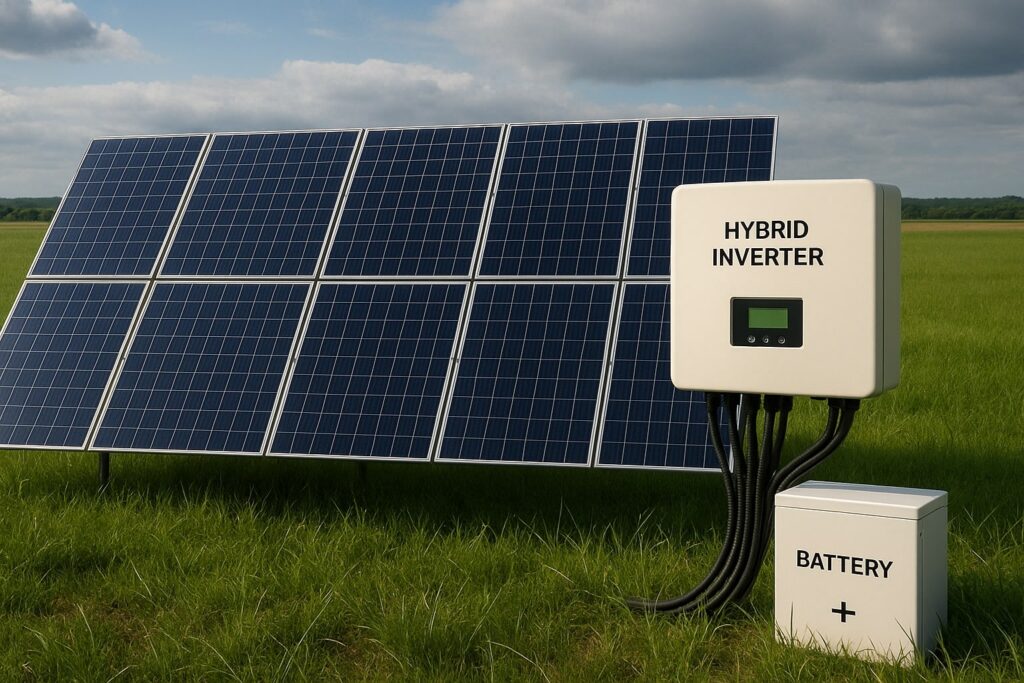

Hybrid Inverters
These work with battery storage. They convert energy and manage charging & discharging automatically.
What is the Life of a Solar Inverter?
On an average a solar inverter can easily last upto 10 years. But with proper care & maintenance it can easily last for upto 15 years.
Below is a quick breakup for different kinds of inverter’s and their average lifespan.
• String Inverters: 10-12 years
• Microinverters: 20+ years (often match panel lifespan)
• Hybrid Inverters: Around 10-15 years
Most of the manufacturers often give 5 to 12 years warranty with options to extend with minor extra charges.
Is Solar Inverter Worth It?
Absolutely!!
As mentioned in the intro without a solar inverter your panels can’t power anything in your home.
Alos many smart inverters help you track your energy usage which can help you reduce your electricity bills even more.
Helpful Tip: If your solar panels generate 6kW but you only use 4kW a smart inverter can send the excess to the grid for credits.
Do Solar Inverters Need Maintenance?
Yes, they definitely need maintenance, but very minimal.
• Keep the inverter clean and dust-free.
• Check for error lights or codes occasionally.
• Ensure proper ventilation (they do get warm).
Most problems are caught early if you monitor your system through an app.
Helpful Tip: Schedule a yearly solar check-up with a technician. It’s like servicing your AC or fridge.
Solar Inverter for Home with Battery vs Without Battery
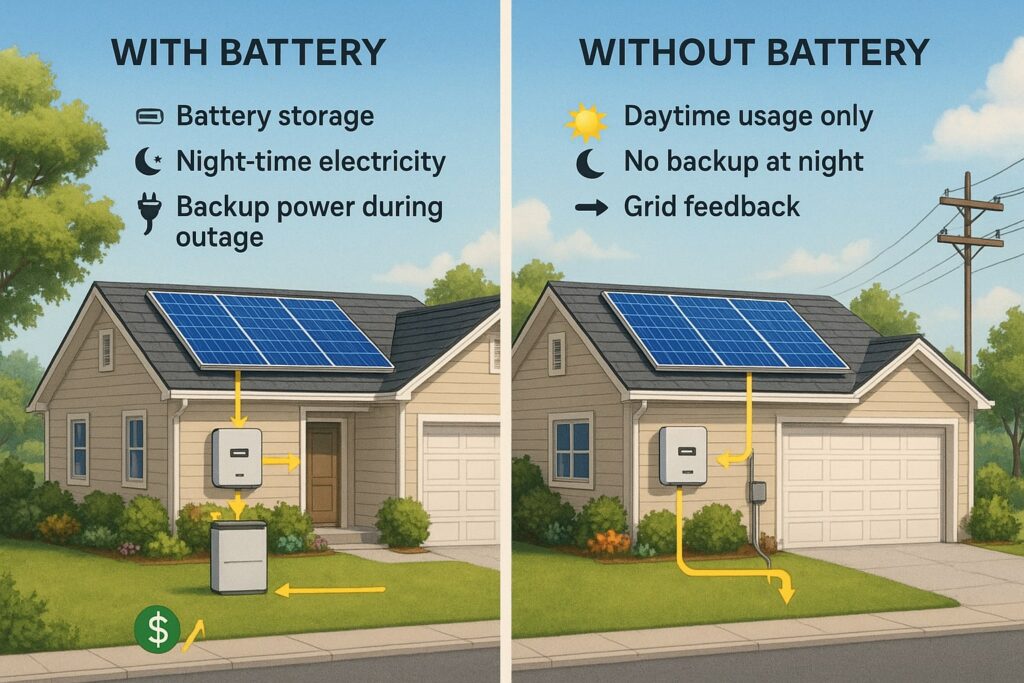

Here’s a simple breakdown for you to make decision quickly:
With Battery:
• Stores excess energy for use at night or during power cuts.
• Useful in off-grid systems.
Without Battery:
• Sends extra power to the grid.
• Lower upfront cost
Use Case: If you have frequent outages or want energy independence, go with battery. Otherwise, grid-tied without battery is fine for savings.
Solar Inverter for RV and Camper/Camping
For people who love traveling or camping with solar, they can:
• Use portable solar inverters (usually 12V or 24V input).
• Pair them with flexible or foldable panels.
• Works great with portable lithium batteries.
Always check the inverter wattage and battery compatibility for your RV.
Solar Inverter vs Normal Inverter
| Feature | Solar Inverter | Normal Inverter |
|---|---|---|
| Source of Power | Solar Panels | Grid electricity |
| Eco-friendly | Yes | No |
| Battery Dependency | Optional | Mandatory |
| Cost Savings | High (solar energy) | Low/No |
Note: A solar inverter can act as a normal inverter when connected to the grid.
Best Solar Inverter Brands in the US
Some reliable names include:
• Enphase (great microinverters)
• SolarEdge (good for smart monitoring)
• SMA America
• Fronius
• Tesla Powerwall (battery + inverter)
Suggestion: Check which ones are eligible for federal and local solar incentives.
Solar Inverter Charger
A solar inverter charger allows the system to both convert DC to AC and charge the battery at the same time. It manages both charging and power conversion.
Good for:
• Hybrid systems
• Off-grid setups
• RVs and campers
Solar Inverter Generator
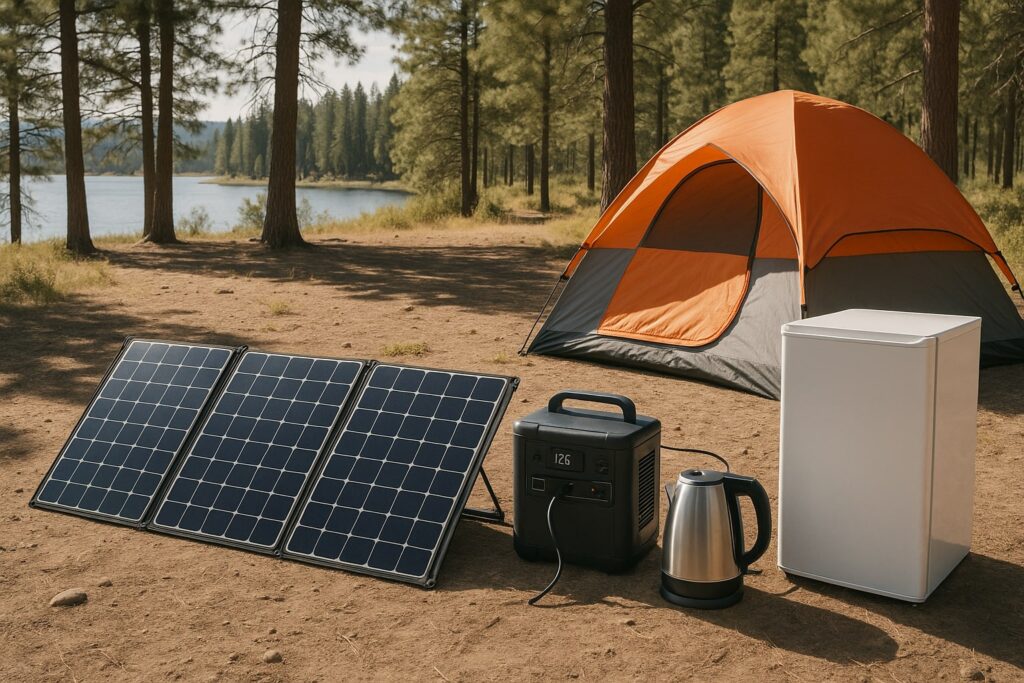
A solar inverter generator is a portable power station that:
• Uses solar panels to charge
• Stores energy in batteries
• Outputs clean AC power
Perfect for camping or emergencies. Brands like Jackery, Bluetti, and EcoFlow are popular in the US.
Solar Inverter Cost (USA)
The cost can vary widely depending on type:
- String Inverter: $1,000 – $2,000
- Microinverters: $800 – $1,500 per kW
- Hybrid Inverter: $2,000 – $3,000
Installation costs extra, and battery-supported systems cost more.
Microinverters cost around $1.15/W vs $0.75/W for string inverters, meaning a 5 kW system could cost $5,750 vs $3,750—supported by data from solar contractors like Forme Solar.
Solar Inverter Off Grid
In an off-grid system, solar inverters must be hybrid models that can handle:
- Solar input
- Battery management
- Sometimes a backup generator
You won’t be connected to the utility grid, so sizing your inverter and battery bank is crucial.
Also Read: Portable Solar Panels for Home Use
FAQs
Final Words – How Solar Inverter Works for Home
This complete guide provides a detailed understanding of how solar inverter works for your home. Your knowledge about inverters stands as a fundamental element for achieving maximum energy savings and maintaining system stability when planning your solar panel system.
Want to go solar smartly? Check out this helpful read:
How Much Can You Save with Solar? Try Our Free Calculator
Checkout our other interesting reads:

